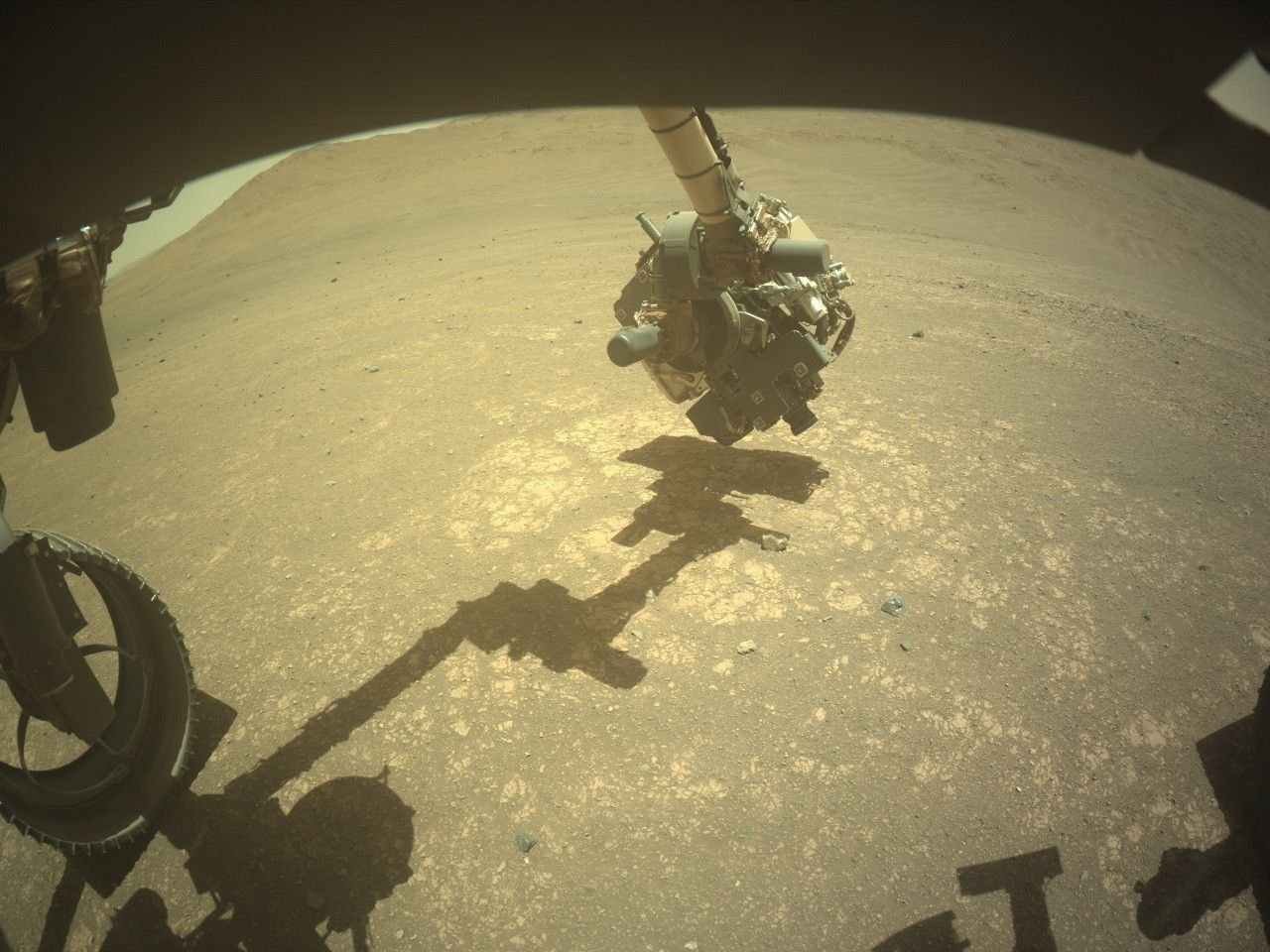JEZERO CRATER, MARS — NASA’s Perseverance rover continues its mission to unlock Mars’ geological secrets, recently acquiring a close-up image of a fresh abrasion patch at “Hare Bay” using its SHERLOC WATSON camera, scientists confirmed.
Elon Musk is claiming SpaceX will send an unmanned mission to the red planet in the next few years.
The image, taken on April 18, 2025 (Sol 1479 of the mission) at 12:53 p.m. local mean solar time, shows the gritty, pale-orange Martian terrain at the edge of Jezero Crater’s “Witch Hazel Hill.” The area features alternating layers of lighter and darker rock, and the rover’s team has been working to understand the relationship between these layers.
Key Points
- Perseverance acquired a detailed image of an abrasion patch called “Hare Bay” on April 18, 2025
- The rover is investigating the difference between light and dark layered rocks, focusing on coarse-grained materials and spherules
- Despite challenges, Perseverance has completed multiple abrasions across Witch Hazel Hill and nearby regions
Perseverance targets coarser Martian rocks for clues
The mission’s latest efforts center around analyzing the dark-toned rocks, which tend to feature larger clasts — or rock fragments — compared to their lighter-toned counterparts. These coarse grains and occasional spherules may offer important clues about the processes that formed Jezero Crater’s layered terrain.
After examining dark layers at sites like “Puncheon Rock” and “Wreck Apple,” where an abrasion wasn’t possible, Perseverance drove south to “Port Anson.” There, the rover performed an abrasion at “Strong Island” but found the rocks below the Witch Hazel Hill contact weren’t the coarse-grained targets sought by scientists.
New abrasion at Hare Bay offers fresh insights
With Port Anson completed, the rover returned north toward “Pine Pond” and “Dennis Pond,” setting its sights on Hare Bay for another attempt. Over the weekend, new data arrived from the abrasion, showing the rough, granular Martian surface beneath the rover’s extended robotic arm.
Scientists are now analyzing whether the Hare Bay sample captures the coarse grains and spherules they have been hunting — and whether it matches previously studied rock units or reveals something entirely new.
Perseverance’s SHERLOC WATSON captures detailed close-up of Martian surface
The image from SHERLOC WATSON shows the abrasion patch in striking detail, with the rover’s mechanical arm and its shadow framing the gritty, light-toned rocks. A portion of a rover wheel is visible in the lower left, a reminder of Perseverance’s constant journey across the Martian landscape.
NASA’s Mars 2020 team continues to study the new data, with findings expected soon as Perseverance forges ahead in its exploration of Jezero Crater’s complex geology.
Perseverance’s latest abrasion may hold answers hidden in Mars’ layered past.

